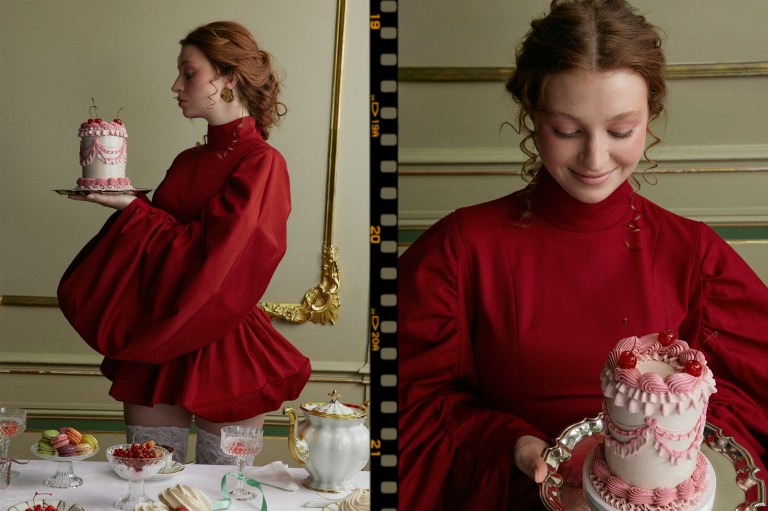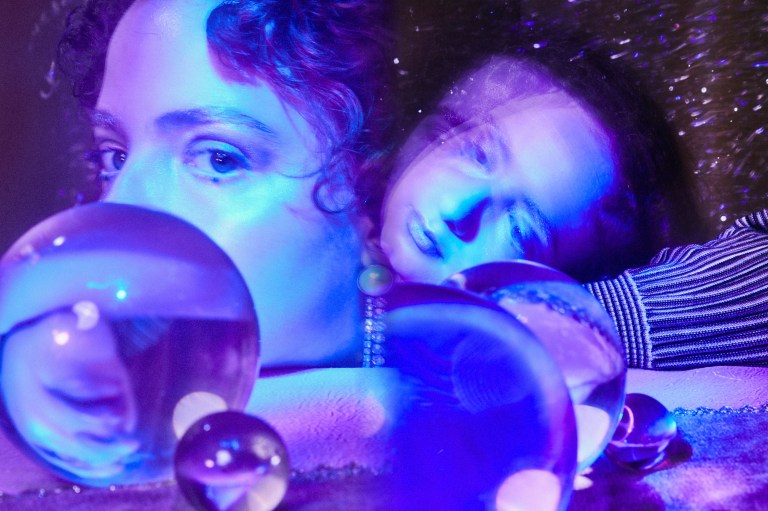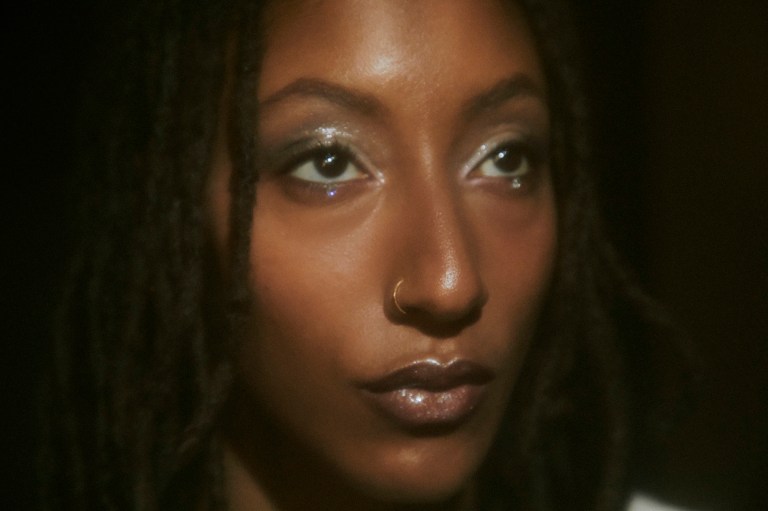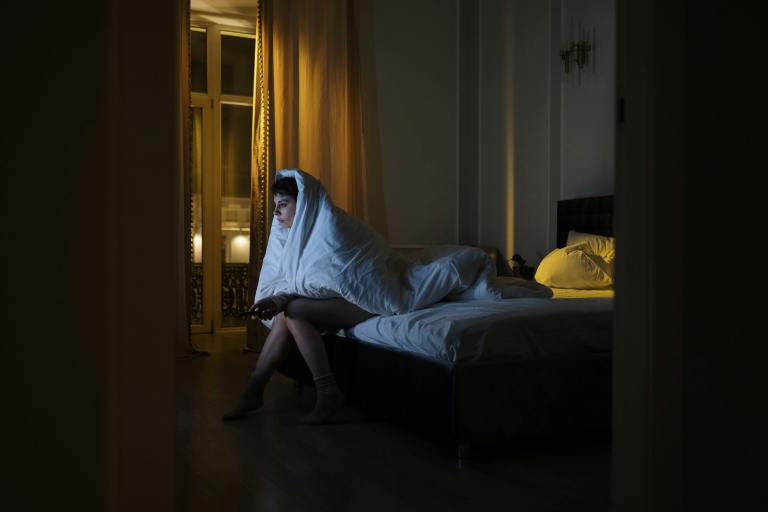
I Surveyed Each Myers-Briggs Type to Find Their Top Attraction – Here Are the Results
By ![]() Heidi Priebe
Heidi Priebe
It’s no secret that certain personality types have a history of getting together with certain other personality types – so much so that various theories have emerged discussing which types are the ‘ideal matches’ for which other types. Below, I went straight to the horses mouth and surveyed over 1700 personality enthusiasts to determine where each type’s main attraction lies — that is, if they displayed a preference at all!
ENFP
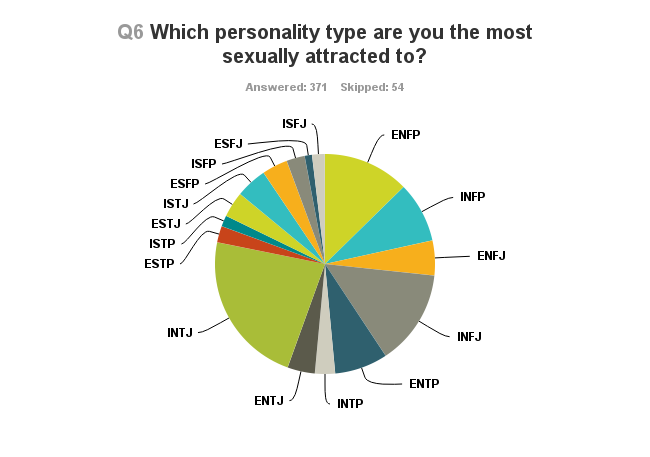
- 23% of ENFPs listed themselves as most attracted to INTJs.
- 14% listed themselves as most attracted to INFJs.
- 13% listed themselves as most attracted to other ENFPs.
Overall, ENFPs showed a significant preference for other intuitive-dominant personality types.
INFP
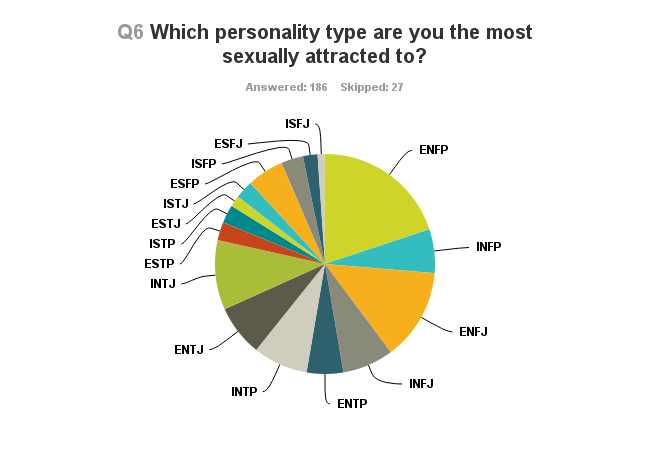
- 20% of INFPS listed themselves as most attracted to ENFPS.
- 14% listed themselves as most attracted to ENFJs.
- 10% listed themselves as most attracted to INTJs.
Overall, INFPs showed a significant preference for intuitive, feeling personality types, followed closely by intuitive, thinking personality types.
ENFJ
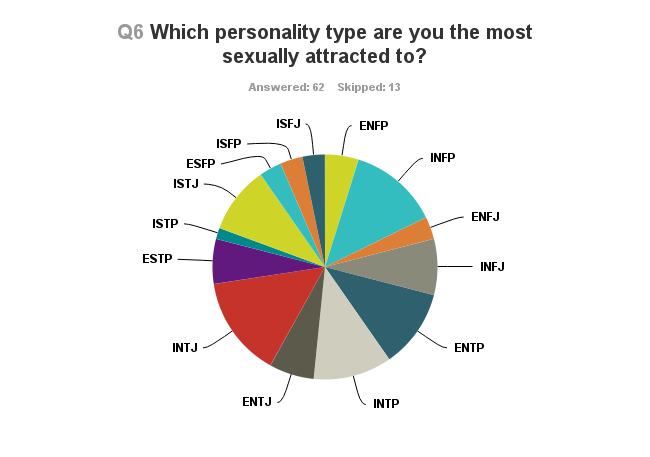
- 15% of ENFJs listed themselves as most attracted to INTJs.
- 13% listed themselves as most attracted to INFPs.
- 11% listed themselves as most attracted to either ENTPs or INTPs.
ENFJs displayed a wide array of type preferences, but generally indicated a preference for intuitive personalities over sensing personalities (with ISTJ types being the exception at 10%).
INFJ
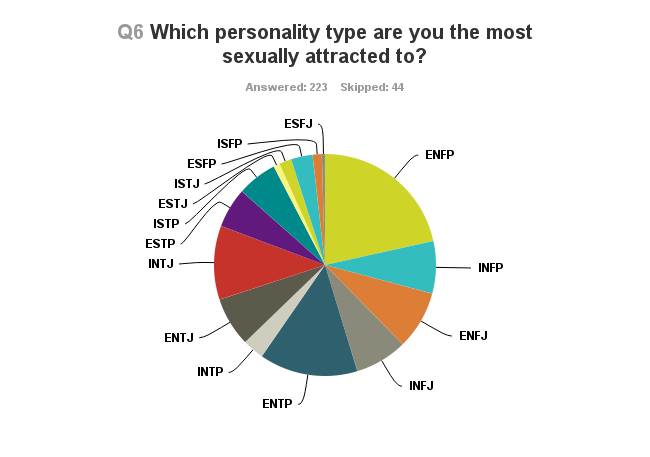
- 21% of INFJs listed themselves as most attracted to ENFPS.
- 14% listed themselves as most attracted to ENTPs.
- 11% listed themselves as most attracted to INTJs.
Overall, INFJs showed a significant preference for other intuitive-dominant personality types.
ENTP
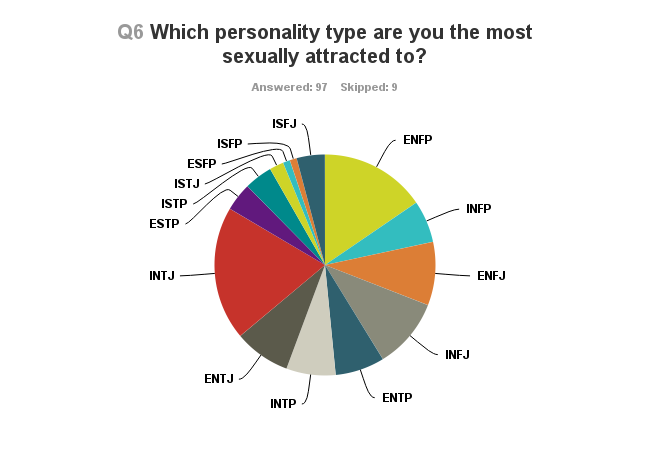
- 20% of ENTPs listed themselves as most attracted to INTJs.
- 15% listed themselves as most attracted to ENFPs.
- 10% listed themselves as most attracted to INFJs.
Overall, ENTPs showed a significant preference for other intuitive-dominant personality types.
INTP
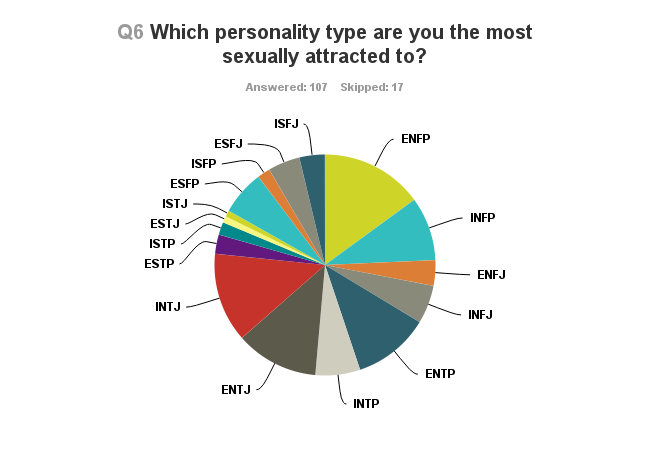
- 15% of INTPS listed themselves as most attracted to ENFPS.
- 13% listed themselves as most attracted to INTJs.
- 12% listed themselves as most attracted to ENTJs or ENTPs.
Despite being thinking-dominant types, INTPs displayed an overall preference for intuitive-dominant types (closely followed by intuitive-auxiliary types).
ENTJ
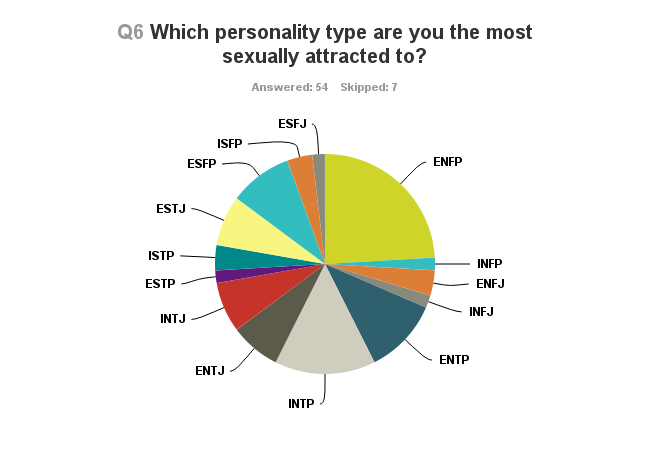
- 24% of ENTJs listed themselves as most attracted to ENFPS.
- 15% listed themselves as most attracted to INTPs.
- 11% listed themselves as most attracted to ENTPs.
ENTJs displayed a significant preference for types that use extroverted intuition – with the exception of INFPs, whom only 2% listed themselves as being most attracted to.
INTJ
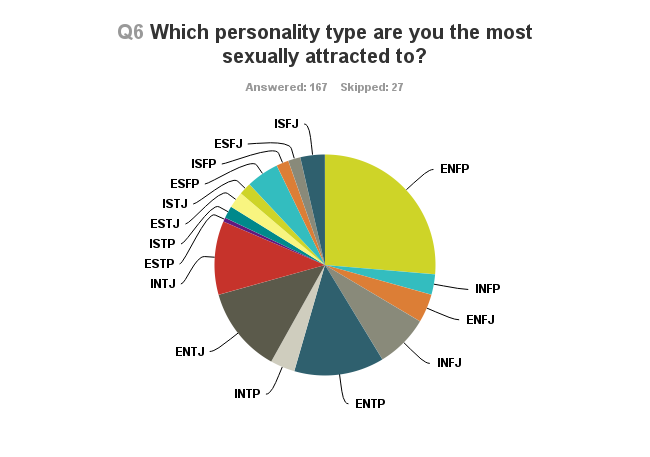
- 26% of INTJs listed themselves as most attracted to ENFPS.
- 13% listed themselves as most attracted to either ENTPs or ENTJs.
- 10% listed themselves as most attracted to other INTJs.
INTJs showed a significant preference for other intuitive-dominant personality types.
ESTP
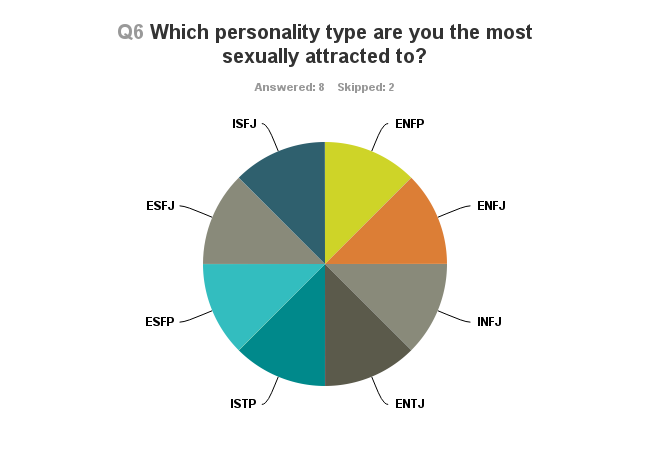
Unfortunately, this survey only received 8 ESTP responses, which was not enough to form conclusive results about which type they find most attractive.
ISTP
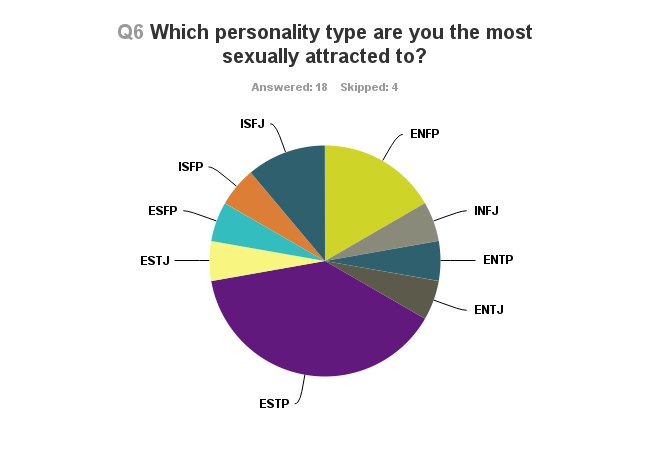
- 39% of ISTPs listed themselves as most attracted to ESTPS.
- 17% listed themselves as most attracted to ENFPs.
- 11% listed themselves as most attracted to ISFJs.
While the ISTP’s results were largely skewed in favor of ESTP and ENFP types, it’s important to note that we did not receive enough responses from this type to deem their preferences significant.
ESTJ
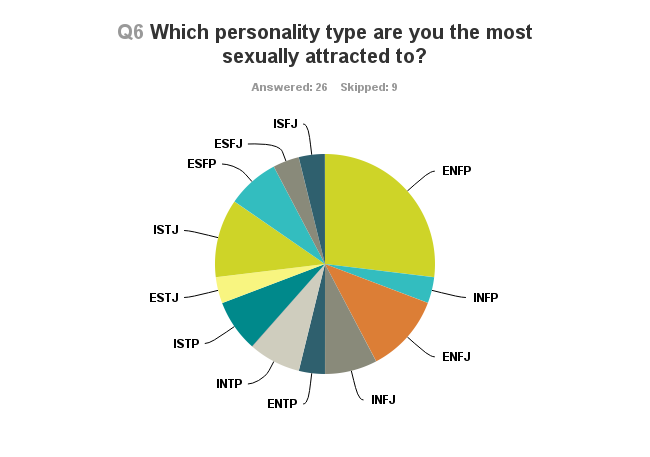
- 27% of ESTJs listed themselves as most attracted to ENFPS.
- 12% listed themselves as most attracted to ISTJs.
- 11% listed themselves as most attracted to ENFJs.
While the ESTJ’s preference for ENFP types was surprising, it’s important to note that we did not receive enough responses from this type to deem their preferences significant.
ISTJ
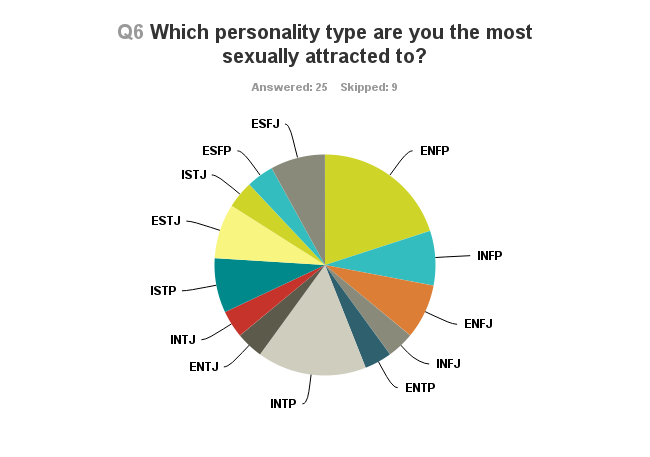
- 20% of ISTJs listed themselves as most attracted to ENFPS.
- 16% listed themselves as most attracted to INTPs.
Interestingly, the ISTJ type displayed the strongest attraction to their dichotomous four-letter opposite, the ENFP. That being noted, we did not receive enough responses from this type to deem their preferences significant.
ESFP
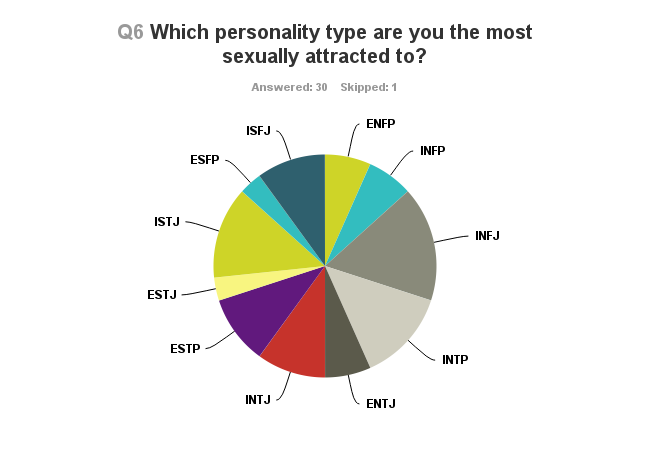
- 17% of ESFPs listed themselves as most attracted to INFJs.
- 12% listed themselves as most attracted to either ISTJs or INTPs.
ESFPs displayed a relatively balanced set of preferences across the sixteen types.
ISFP
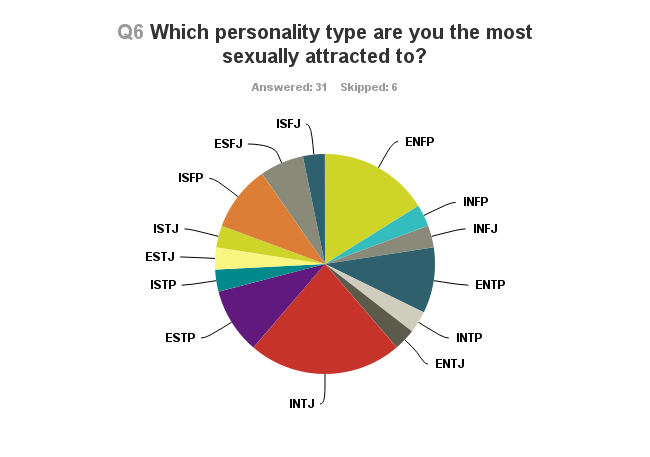
- 23% of ISFPs listed themselves as most attracted to INTJs.
- 16% listed themselves as most attracted to ENFPs.
- 10% listed themselves as most attracted to other ISFPs.
Interestingly, ISFPs displayed a strong preference toward intuitive-dominant types. That being said, we did not receive enough responses from this type to deem their preferences significant.
ESFJ
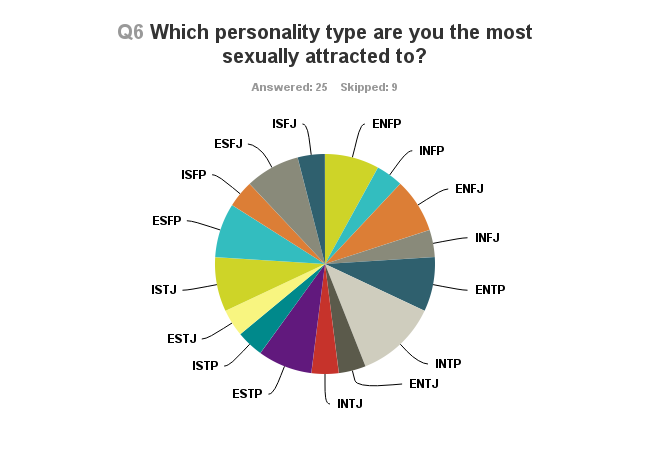
- 12% of ESFJs listed themselves as most attracted to INTPs.
- The remainder of the results were relatively balanced across all types.
Overall, we did not receive enough responses from this type to deem their preferences significant.
ISFJ
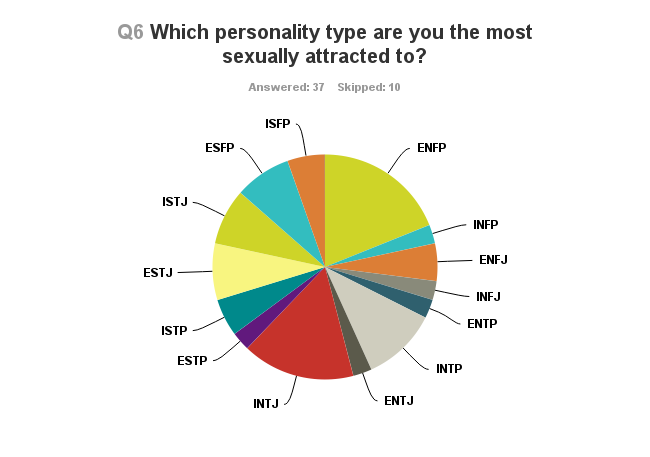
- 19% of ISFJs listed themselves as most attracted to ENFPS.
- 16% listed themselves as most attracted to INTJs.
- 11% listed themselves as most attracted to INTPs.
Interestingly, ISFJs displayed a strong preference for intuitive types. That being said, we did not receive enough responses from this type to deem their preferences significant.
